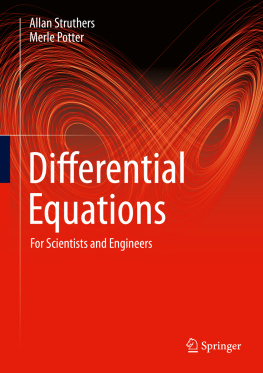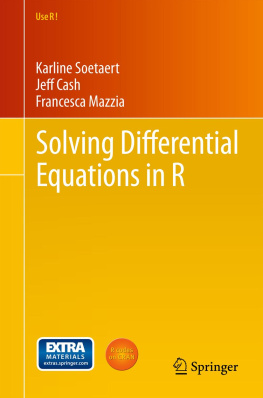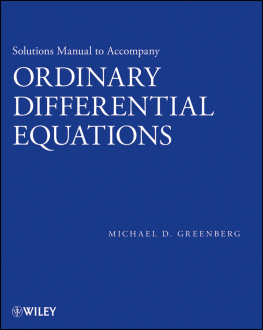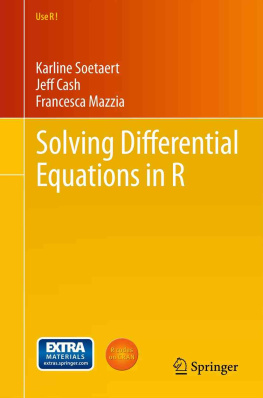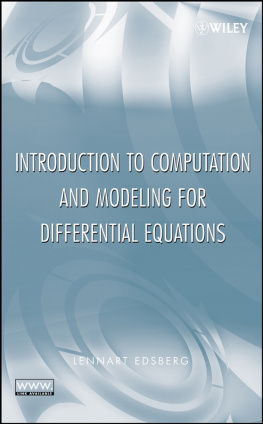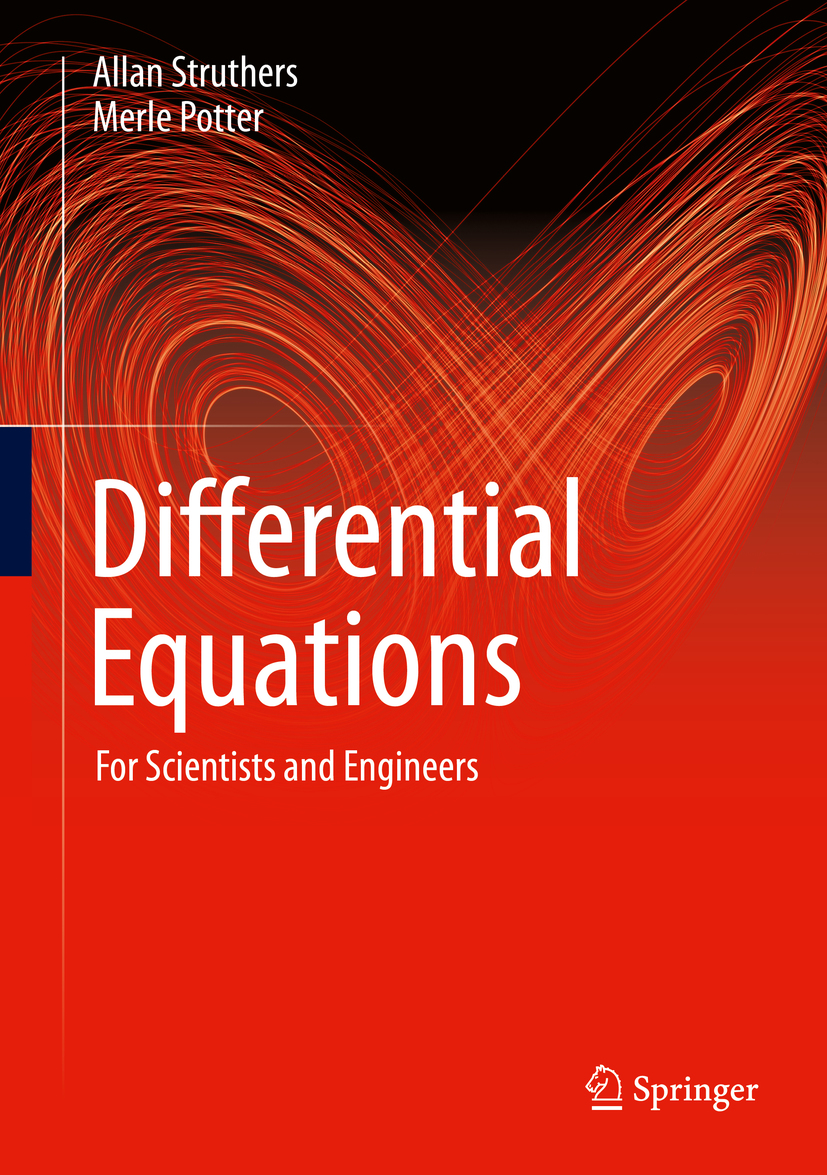Allan Struthers
Department of Mathematical Sciences, Michigan Technological University, Houghton, MI, USA
Merle Potter
Okemos, MI, USA
ISBN 978-3-030-20505-8 e-ISBN 978-3-030-20506-5
https://doi.org/10.1007/978-3-030-20506-5
Springer Nature Switzerland AG 2019
This work is subject to copyright. All rights are reserved by the Publisher, whether the whole or part of the material is concerned, specifically the rights of translation, reprinting, reuse of illustrations, recitation, broadcasting, reproduction on microfilms or in any other physical way, and transmission or information storage and retrieval, electronic adaptation, computer software, or by similar or dissimilar methodology now known or hereafter developed.
The use of general descriptive names, registered names, trademarks, service marks, etc. in this publication does not imply, even in the absence of a specific statement, that such names are exempt from the relevant protective laws and regulations and therefore free for general use.
The publisher, the authors, and the editors are safe to assume that the advice and information in this book are believed to be true and accurate at the date of publication. Neither the publisher nor the authors or the editors give a warranty, express or implied, with respect to the material contained herein or for any errors or omissions that may have been made. The publisher remains neutral with regard to jurisdictional claims in published maps and institutional affiliations.
This Springer imprint is published by the registered company Springer Nature Switzerland AG.
The registered company address is: Gewerbestrasse 11, 6330 Cham, Switzerland
Preface
In
Differential Equations for Scientists and Engineers , we endeavor to introduce students to two interesting and important areas of mathematics that enjoy powerful interconnections and applications. The text presents an introduction to linear algebra and then in its remaining six chapters investigates differential equations while highlighting the role that linearity plays in their study. Throughout the text, we strive to reach the following goals:
To motivate the study of linear algebra and differential equations through interesting applications in order that students may see how theoretical results can answer fundamental questions that arise in physical situations.
To demonstrate the fact that linear algebra and differential equations can be presented as two parts of a mathematical whole that is coherent and interconnected. Indeed, we regularly discuss how the structure of solutions to linear differential equations and systems of equations exemplify important ideas in linear algebra and how linear algebra often answers key questions regarding differential equations.
To present an exposition that is intended to be read and understood by students. While certainly every textbook is written with students in mind, often the rigor and formality of standard mathematical presentation take over, and books become difficult to read. We employ an examples-first philosophy that uses an intuitive approach as a lead-in to more general, theoretical results.
To develop in students a deep understanding of what may be their first exposure to post-calculus mathematics. In particular, linear algebra is a fundamental subject that plays a key role in the study of much higher-level mathematics; through its study, as well as our investigations of differential equations, we aim to provide a foundation for further study in mathematics for students who are so interested.
Whether designed for mathematics or engineering majors, many universities offer a hybrid course in linear algebra and differential equations, and this text is written for precisely such a class. At other institutions, linear algebra and differential equations are treated in two separate courses; in settings where linear algebra is a prerequisite to the study of differential equations, this text may also be used for the differential equations course, with its first chapter on linear algebra available as a review of previously studied material. More on the ways, the book can be implemented in these courses which follow shortly in the section . An overriding theme of the book is that if a differential equation or system of such equations is linear, then we can usually solve it exactly.
Linear Algebra and Systems First
In most other texts that present the subjects of differential equations and linear algebra, the presentation begins with first-order differential equations, followed by second- and higher-order linear differential equations. Following these topics, a modest amount of linear algebra is introduced before beginning to consider systems of linear differential equations. Here, however, we begin on the very first page of the text with an example that shows the natural way that systems of linear differential equations arise and use this example to motivate the need to study linear algebra. We then embark on a one-chapter introduction to linear algebra that aims not only to introduce such important concepts as linear combinations, linear independence, and eigenvalue problem but also to foreshadow the use of such topics in the study of differential equations.
Following Chap.. In that setting, we show how the eigenvalues of an nn matrix A naturally provide the general solution to systems of linear differential equations in the form x = Ax . Moreover, we include examples that show how any single higher-order linear differential equation may be converted to a system of equations, thus providing further motivation for why we choose to study systems first. Through this approach, we again strive to emphasize critical connections between linear algebra and differential equations and to demonstrate the most important ideas that arise in the study of each.
Features of the Text
Instructors and students alike will find several consistent features in the presentation.
Each chapter begins with one or two motivating problems that present a natural situation often a physical application. From such problems, we work to develop related ideas in subsequent sections that enable us to solve the original problem.
In almost every section of the text, we use an examples-first approach . By this, we mean that we introduce a certain type of problem that we are interested in solving and then consider a relatively simple one that can be solved by intuition or ideas studied previously. From the solution of an elementary example, we then discuss how this approach can be generalized or modified to solve more complex examples and then ultimately prove or state theorems that provide general results that enable the solution of a wide range of problems. With this philosophy, we strive to demonstrate how the general theory of mathematics comes from experimenting and investigating through individual examples followed by looking for overall trends. Moreover, we often use this approach to foreshadow upcoming ideas: for example, while studying linear algebra, we look ahead to a handful of fundamental differential equations. Similarly, early on in our investigations of the Laplace transform, we regularly attempt to demonstrate through examples how the transform will be used to solve initial-value problems.

